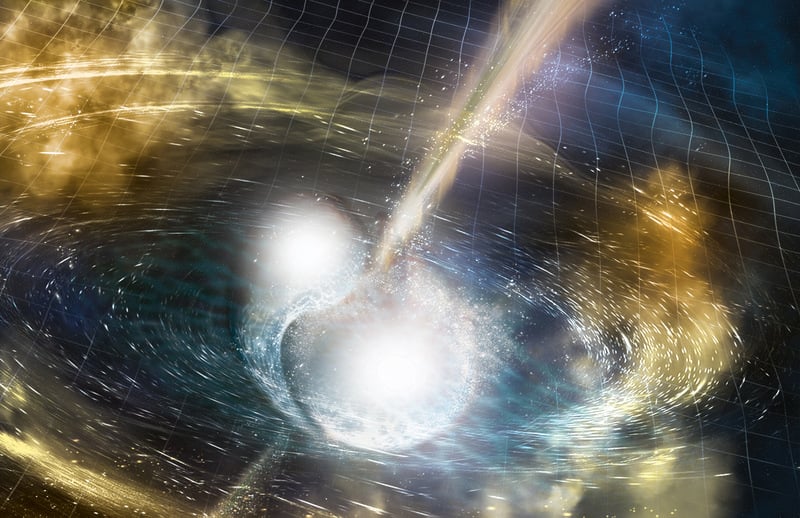In
February of 2016
, scientists from the
Laser Interferometer Gravitational-Wave Observatory
(LIGO) announced the first-ever detection of
gravitational waves
. A little over a century after they were first predicted by
Einstein's Theory of General Relativity
, we finally had proof that this phenomenon existed. In
August of 2017
, another major breakthrough occurred when LIGO detected waves that were believed to be caused by a neutron star merger.
Shortly thereafter, scientists at LIGO,
Advanced Virgo
, and the
Fermi Gamma-ray Space Telescope
were able to determine where in the sky the neutron star merger occurred. While many studies have focused on the by-products of this merger, a
new study
by researchers from Trinity University, the University of Texas at Austin and
Eureka Scientific
, has chosen to focus on the remnant, which they claim is likely a black hole.
For the sake of their study, which recently appeared online under the title "
GW170817 Most Likely Made a Black Hole
", the team consulted data from the
Chandra X-ray Observatory
to examine what resulted of the supernova merger. This data was obtained during Director's Discretionary Time observations that were made on December 3rd and 6th, 2017, some 108 days after the merger.
This data showed a light-curve increase in the X-ray band which was compatible to the radio flux increase that was reported by a previous study conducted by the same team. These combined results suggest that radio and X-ray emissions were being produced at the same source, and that the rising light-curve that followed the merger was likely due to an increase in accelerated charged particles in the external shock - the region where an outflow of gas interacts with the interstellar medium.
As they indicate in their study, this could either be explained as the result of a more massive neutron star being formed from the merger, or a black hole:
The team also ruled out various possibilities of what could account for this rise in X-ray luminosity. Basically, they concluded that the X-ray photons were not coming from a debris disk, which would have been left over from the merger of the two neutron stars. They also deduced that they would not be produced by a relativistic jet spewing from the remnant, since the flux would be much lower after 102 days.
[caption id="attachment_103553" align="aligncenter" width="580"]
Collisions of neutron stars produce powerful gamma-ray bursts – and heavy elements like gold. Credit: Dana Berry, SkyWorks Digital, Inc.
[/caption]
All of this indicated that the remnant was more likely to be a black hole than a hyper-massive neutron star. As they explained:
Last, but not least, they considered the X-ray and radio emissions that were present roughly 100 days after the merger. These, they claim, are best explained by continued emissions coming from the merger-induced shock (and the not remnant itself) since these emissions would continue to propagate in the interstellar medium around the remnant. Combined with early X-ray data, this all points towards GW170817 now being a black hole.
The first-ever detection of gravitational waves signaled the dawn of a new era in astronomical research. Since that time, observatories like LIGO, Advanced Virgo, and GEO 600 have also benefited from information-sharing and new studies that have indicated that mergers
are more common than previously thought
, and that gravity waves could be used to
probe the interior of supernovae
.
With this latest study, scientists have learned that they are not only able to detect the waves caused by black hole mergers, but even the creation thereof. At the same time, it shows how the study of the Universe is growing. Not only is astronomy advancing to the point where we are able to study more and more of the visible Universe, but the invisible Universe as well.
 Universe Today
Universe Today
